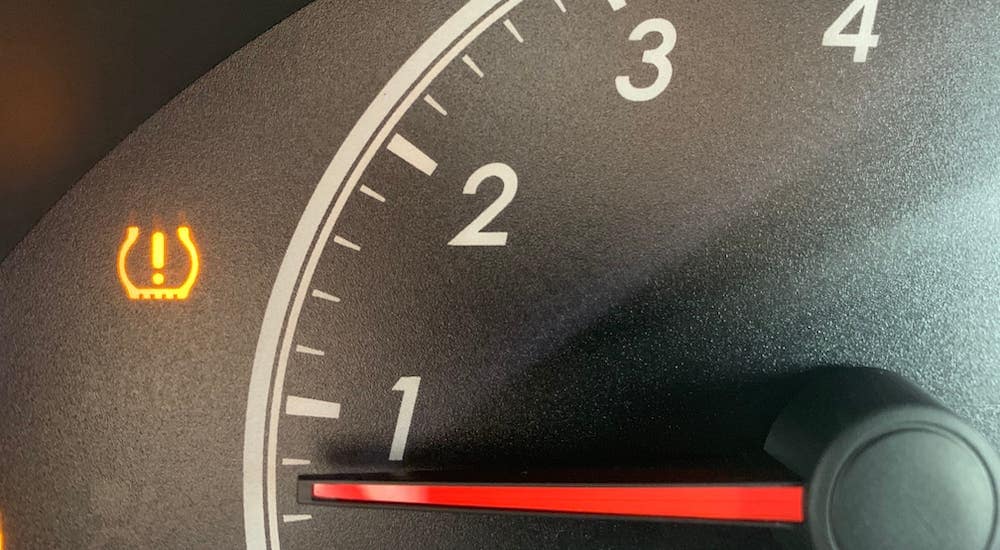Why That Pesky Tire Pressure Light Won’t Go Out: A Guide to Troubleshooting and Resetting
A flickering or illuminated tire pressure monitoring system (TPMS) light on your dashboard can be a source of annoyance and worry. You’ve filled your tires to the recommended pressure, yet the light persists. Fear not, fellow driver! This comprehensive guide delves into the reasons behind a stubborn TPMS light and equips you with solutions to get it extinguished and your tires safely inflated.
Understanding the Tire Pressure Monitoring System (TPMS): Your Tire’s Guardian Angel
Modern vehicles come equipped with TPMS, a safety feature that constantly monitors the air pressure in your tires. There are two main types of TPMS systems:
- Direct TPMS: This system uses pressure sensors mounted inside each tire that transmit real-time data to your car’s computer. When a tire falls below the recommended pressure by around 25%, the TPMS light illuminates, alerting you to a potential safety hazard.
- Indirect TPMS: This system relies on wheel speed sensors to monitor tire rotation. If a tire with low pressure is rotating at a different speed than the others, the computer interprets this as a potential underinflation and triggers the TPMS light.
Why the Light Lingers: Unveiling the Culprits
Several factors can keep your TPMS light on even after inflating your tires:
- Incorrect Pressure: Double-check the recommended tire pressure for your specific vehicle. It’s usually found on a sticker inside the driver’s door jamb or within the owner’s manual. Ensure all tires are inflated to this exact pressure, not just “looking full.”
- Sensor Issues: TPMS sensors can malfunction over time due to corrosion, battery failure, or physical damage. A faulty sensor might send inaccurate readings to the car’s computer, triggering the light.
- Temperature Fluctuations: Air pressure naturally fluctuates with temperature changes. Cold weather can cause a slight decrease in pressure, even in properly inflated tires. If you inflated during a particularly cold spell, driving for a while might be enough for the pressure to rise and the light to reset. However, significant or persistent pressure drops require further action.
- Reset Procedure Not Followed: Some vehicles require a specific reset procedure after inflating tires to clear the TPMS light. Consult your owner’s manual for your car’s specific instructions, which might involve holding a button or navigating through the car’s menu system.
- Leakage: A slow leak in one of your tires could be causing the pressure to drop, keeping the light on. If refilling and resetting don’t solve the issue, a professional inspection to identify and fix the leak might be necessary.
Troubleshooting and Resetting the TPMS Light: Taking Back Control
Here’s how to tackle a persistent TPMS light:
- Re-inflate and Check Pressure: Using a reliable tire pressure gauge, re-inflate all tires to the recommended pressure as specified in your owner’s manual. Double-check the pressure of each tire to ensure accuracy.
- Consult Your Manual: Refer to your car’s owner’s manual for any specific TPMS reset procedures. Some vehicles require a manual reset using a button or menu navigation.
- Drive for a While: Sometimes, simply driving for 10-15 miles allows the TPMS system to re-calibrate and recognize the adjusted pressure, causing the light to reset automatically.
- Seek Professional Help: If the light remains illuminated after following these steps, it’s advisable to consult a qualified mechanic or tire specialist. They can diagnose the issue, be it a faulty sensor, a leak, or a more complex problem with the TPMS system itself.
Preventive Maintenance: Keeping Your Tires and TPMS Happy
Here are some tips to maintain healthy tire pressure and avoid TPMS woes:
- Regular Pressure Checks: Make a habit of checking your tire pressure at least once a month, especially before long trips.
- Seasonal Adjustments: Remember that temperature fluctuations can affect tire pressure. Consider adjusting the pressure slightly based on the season (refer to your owner’s manual for recommendations).
- Proper Tire Maintenance: Regular tire rotations and alignments help ensure even wear and tear, reducing the risk of pressure imbalances.
FAQ
- What does a flashing TPMS light mean compared to a solid light?
A rapidly flashing TPMS light typically indicates a sudden and significant pressure loss in one or more tires. A constantly illuminated light usually signifies a pressure drop of around 25% or more.
- How much does it cost to replace a TPMS sensor?
The cost of replacing a TPMS sensor can vary depending on the make and model of your vehicle.






More Stories
Where to Watch USMNT vs Jamaica National Football Team
How I Met My Monster
How Should a Ring Fit